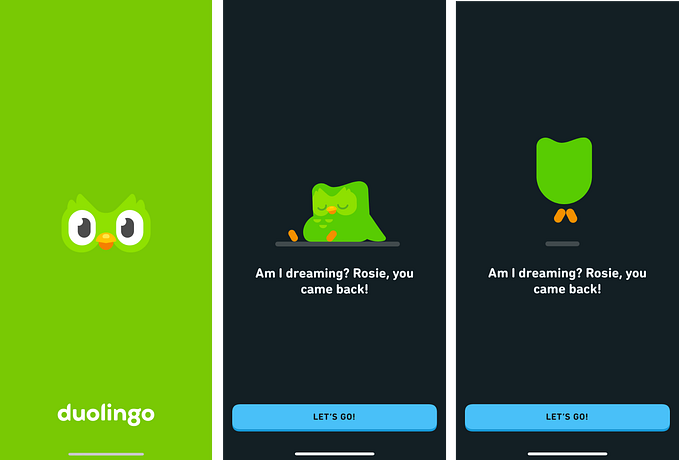Stop user discrimination! Start using personas
Sorry for the clickbait title, this article contains theoretical thoughts about personalization UX with examples, personas use attempt, data analysis and half tablespoon of humor.
Okay, let’s start with restaurant dinner 🍲
Imagine the feeling of vegetarian that comes to the restaurant and there is a special vegetarian menu. This is how feels a person that can personalize his user experience in your app or service.
Personalization increases loyalty and the loyal users have a much higher chance to use your premium/pro features. In an environment of high competitiveness and market oversaturation, don’t underestimate the role of personalizing user experience.

Customization aka personalization is everywhere, dark/light mode on android, iOS, Windows, Linux (?) — every operating system is less or more using it.
It isn’t the first human need, but maybe the second. Whole fashion design is about personalization experience, otherwise, the whole world was wearing the same clothes, just like Zuckerberg or Steve Jobs.
Take a look at the game industry just for a moment, the whole multi-million monetization model at Fortnite — is based on personalization.

Sounds enough earnestly? If yes, keep on, the showcase part is waiting for you.
Personalization Showcase
A few weeks ago I designed and developed at Quick ‘A’ Chrome extension for quicker tab access, that UX is focused on keyboard control. Posted it on facebook, product hunt, Reddit and developer forums. Two articles about extension were published on lifehacker.ru and http://antyweb.pl/
After 2 weeks extension got 820 weekly users, lots of feedbacks, analytics data and uninstall surveys results. We will use all these data later on.

So what to do next? Shortcuts customization, bookmarks functionality, tab searching ala spotlight? I didn’t know till started with personas.
Personalization word root — persona
After reading lots of articles, visiting workshops and fortunetelling on coffee spots. I decided to try it by myself. This is my first personas experience, maybe I am doing it not by the book according to best UX practices, but that helped to understand user needs a little bit better.
And here we go 👟

Meet Richard — a passionate keyboard ninja. He writes tons of code each hour, sometimes his mouse feels lonely without warm human hands…
Richard broke with his girlfriend because she was pressing four-time space for code indent instead of pressing tab once. That was so annoying!

Olyetta uses Instagram to store her food photos and takes English lessons on skype.
She prefers to use the mouse and knows something about web extensions from social media.
Generally, I stopped on these two persons with different needs. Michael uses a keyboard because of productivity and Olyetta prefers the mouse. Maybe I should concentrate just on Michaele’s needs and mouse users aren’t my target audience?
But wait a moment, let’s take a look at analytic events data first.

Look at these numbers! My personas theory just ruined! Behind the scenes, when nobody sees him Richard is using mouse.
What can we learn from these numbers?
Returning users keyboard event — 3.2K
Returning users popup event — 0.8K
That means 25% of returning users events are related to mouse use scenario. Then I looked at the uninstall survey.
There were the following uninstall reasons:
+ Bug (7.14%)
+ Missing Feature (14.2%)
+ Inconvenience of use (46.1%)
+ I am not using keyboard shortcuts (7.14% )
+ It’s not saving time for me (7.14%)
+ Other (14.2%)
So here is my theory:
Users are installing the extension because it looks nice and has good promise, but still, are using it with the mouse, although Quick ‘A’ was designed for keyboard use. Classic UX fail!

Clicking on the popup icon shows the first short animation, and only after 0.75 seconds, the navigation bar appears. I made it that way to teach users using keyboard shortcuts but seems like a big part of users that uses extension prefer to use a mouse. That’s the pain point where I have to add personalization, instead of trying to change users habits.
Personalization Design
Generally, there are just 2 use cases, mouse and keyboard.
Let’s take care of mouse users

The first thing I made, removed popup with keyboard shortcuts for mouse users, tabs navbar appears immediately. Placed this navigation bar on the top right corner, just below the extension icon to make the distance between click targets as short as possible.
And what about keyboard users?

Now no need to teach every user to use a keyboard, instead of it there is full keyboard shortcuts cheatsheet, just in case, user forgot hotkeys.
Onboarding
After separating UX into 2 different use cases, we have to add onboarding to let first-time users personalize their experience.

On the first install, this page will open, so users can choose the tool they prefer to use. Mouse or keyboard, super short onboarding ever.
Design and development took around one week, this time update was published on the Chrome Web Store after 60 minutes. Currently, I am monitoring analytics data to check what impact this change made, and I already can see that 25% of users choose a mouse, and the uninstall rate is decreasing.
Thank you for reading 👓
If you found this article useful or interesting, please follow me on Twitter
How and why Quick ‘A’ was made, what problems it solves and more









